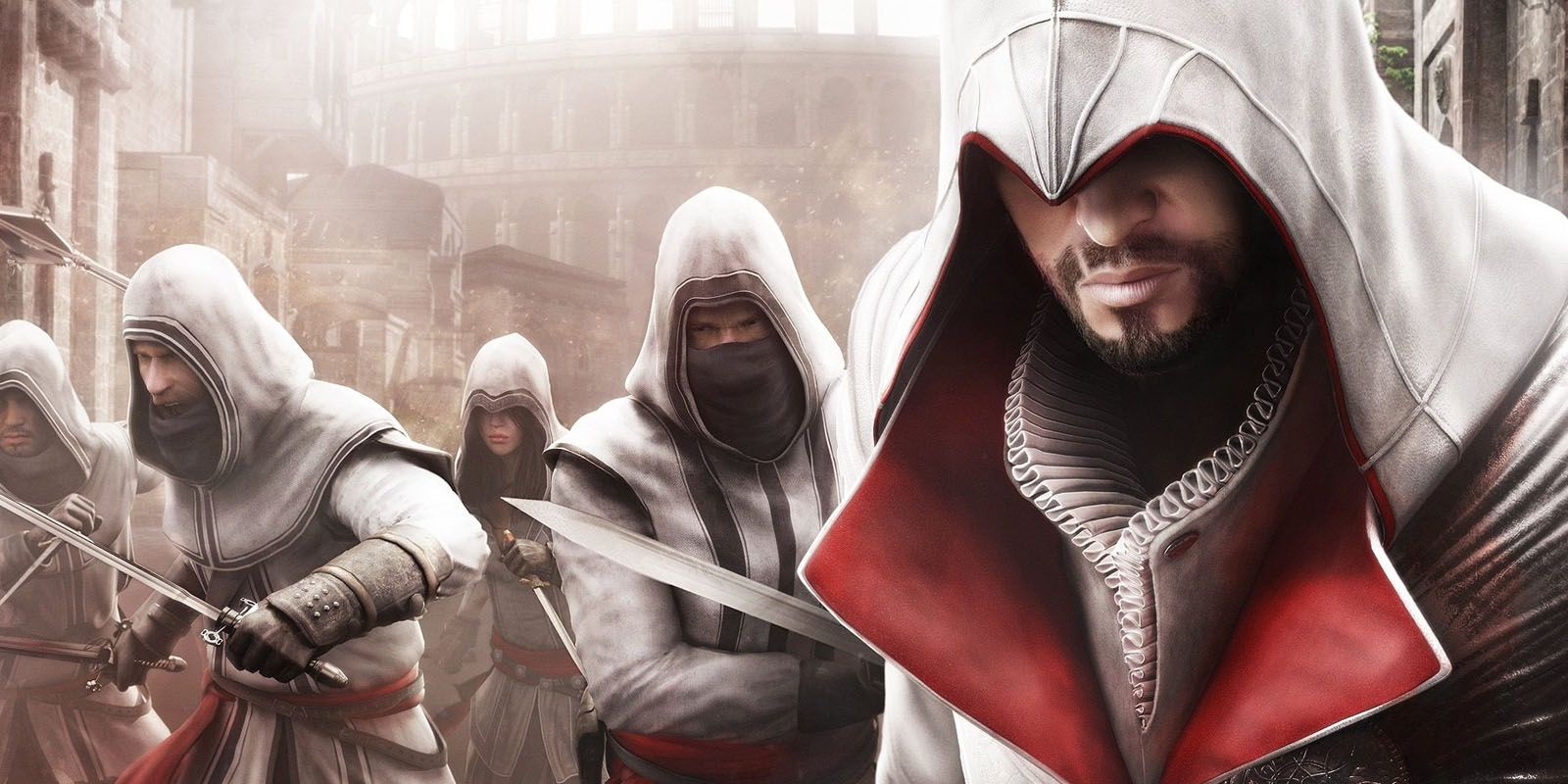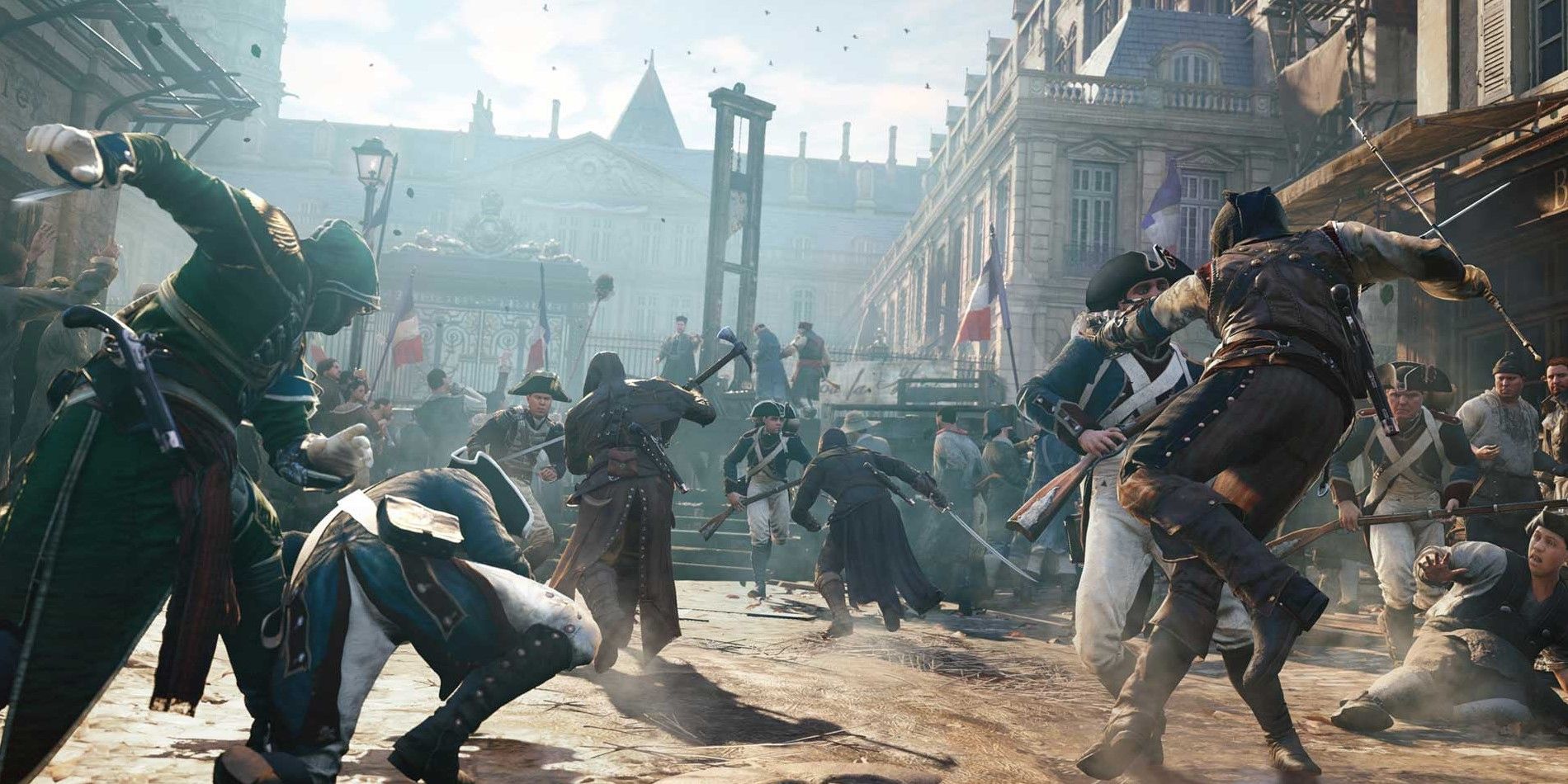The Assassin's Creed series has some iconic costumes, but sometimes the robes that the Assassin Brotherhood wears don't seem like the wisest choice. Of course, there are many leaps of logic in the Ubisoft franchise, and Assassin's Creed players have to be willing to bring some suspension of disbelief to a narrative that involves far-reaching sci-fi elements in a historical setting. Fashion just so happens to be one more feature that asks the player for a little faith. In a series all about blending in, the robes of the Assassin Brotherhood are a terrible idea.
The Brotherhood's robes make their first appearance in the original Assassin's Creed game, with the incredibly badass Altaïr bedecked in white from the start. For Altaïr, the outfit makes some sense. The first game contains batches of scholars, groups in white robes that can be either Muslim or Christian ascetics. At a glance, a passerby might take Altaïr for a scholar, and the ensemble lets him blend in with said groups to avoid detection. In Assassin's Creed II, however, the choice starts to seem less wise. In the rich tapestry of color that makes up Renaissance fashion, white stands out more than most choices would. Rather than blending in, as the Creed itself dictates, Ezio seems to be calling attention to himself in the default outfit. Any guards that don't notice a figure in white running across red-tiled rooftops may need to get their eyes checked.
How The Brotherhood's Robes Evolve In Assassin's Creed
Not every game in the series sticks to the original white for the Assassin's robes, and even Ezio himself moves on. As Assassin's Creed: Revelations wraps up Ezio's complete story, he dons robes in a more muted color scheme, distinguishing him more from Altaïr's reappearance as a secondary protagonist. Assassin's Creed 3 returns to white for Connor's look, a choice that seems justifiable when he's running through snowy fields but less wise in the streets of Boston and New York. Even Edward Kenway wears the white hood in Assassin's Creed 4: Black Flag, a strange look for a pirate that a bandolier of pistols can't quite offset.
The white hood didn't say its final goodbye with Edward - Bayek of Assassin's Creed Origins sports one again - but it seems unlikely that the old series staple will make a consistent return. Assassin's Creed Syndicate gives protagonists Jacob and Evie darker clothing, for example, representing a shift away from that ideal. Beyond color, the elaborate designs of Assassins' outfits stand out in general, particularly in environments like Paris or London where a hood would be out of the ordinary. Assassin's Creed Odyssey and Assassin's Creed Valhalla do away with a primary hooded costume entirely, however, offering up protagonists who do finally stand a decent chance of blending in when they need to. In the name of realism, this progression could be seen as a triumph, but Ezio looking as stylish as he did might have been worth it.
For fans who find themselves nostalgic for the classic outfits, the upcoming title Assassin's Creed Mirage does promise a new white hood for the upcoming protagonist Basim. It remains to be seen whether scholars will make a return, grounding Mirage's stealth in Assassin's Creed's original promise, or whether Basim will stick out in Baghdad as much as Ezio did in Venice. If he does, it might be time for someone to slip him a memo explaining the situation; someone in the Assassin Brotherhood needs to know that the robes they've been wearing are the worst possible choice for - well, being an Assassin.


